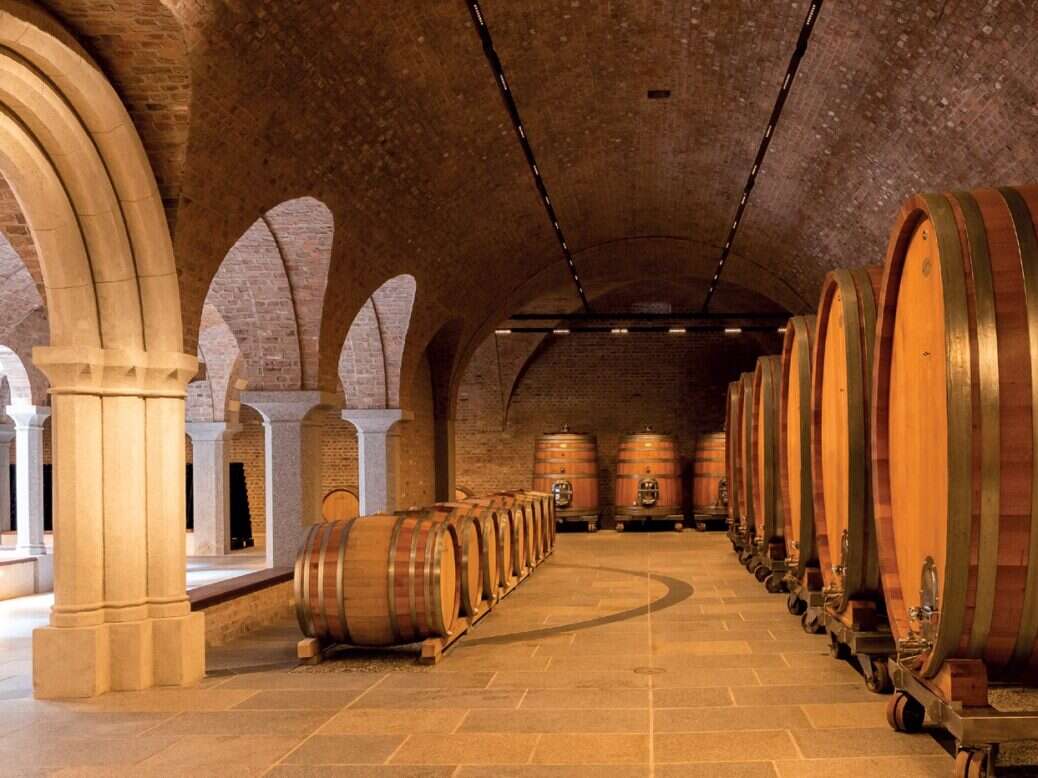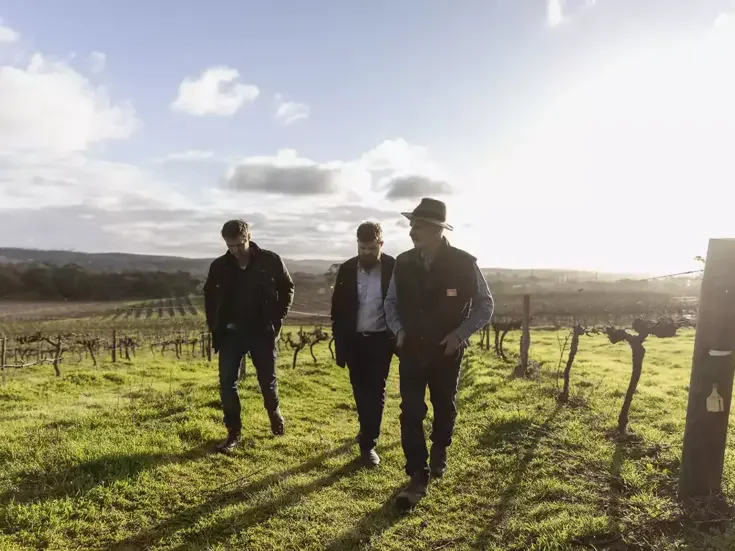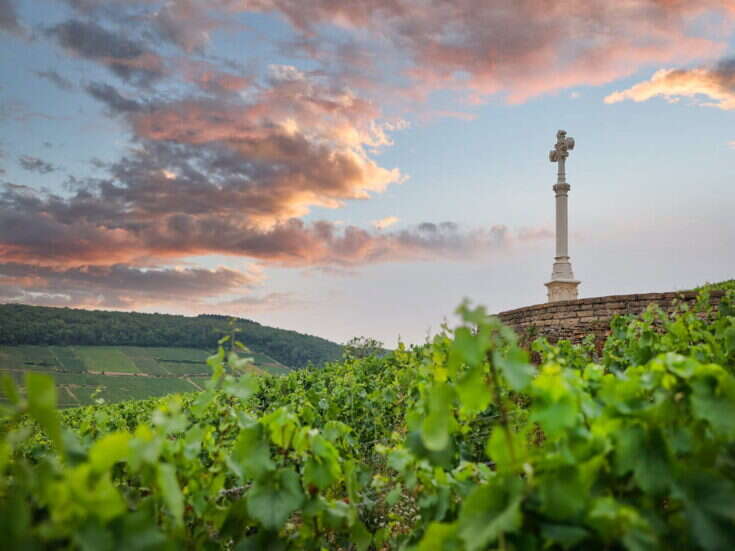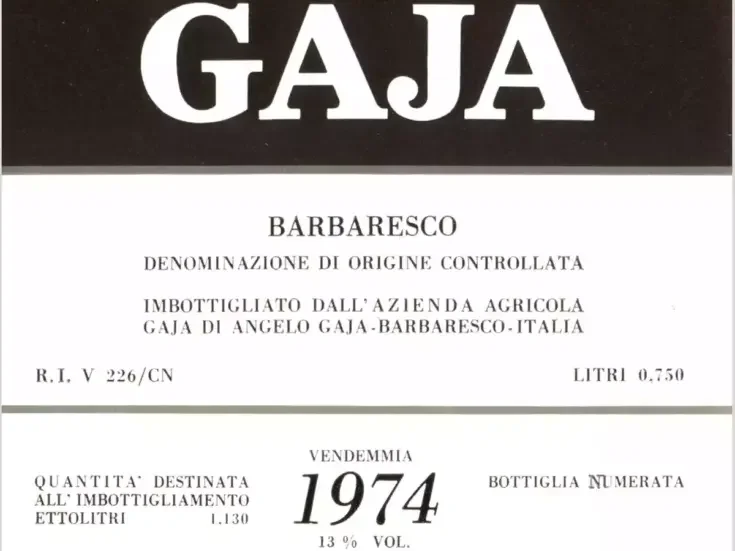
Terry Theise is captivated by the sparkling and white wines of Schloss Gobelsburg in the second installment of his two-part review of the latest releases from the historic Austrian estate.
Schloss Gobelsburg: Moments in time
Schloss Gobelsburg SEKT, Vintage 2010 “Grosse Reserve” ++
Disgorged September 21, 2020.
I tasted this among the other sparkling wines from the estate—uniformly superb, by the way—and found it just papery enough to wonder whether it was A) the nature of 2010, B) below threshold cork, or C) a shock in a group of much younger wines. I queried the winery how they felt the wine “ought” to show, and they kindly sent me another bottle.
Which I taste forthwith, aided now by my new Juhlin 2.0 stem, from which I have preferred every sparkling wine I’ve poured in it since May. I have the original Juhlin also. Say what you want about Mr. Juhlin; his glasses work.
All right; this is indeed a different wine, and I think cork was the culprit before. It is also magnificent sparkling wine by any standards, and I wonder whether anything greater has yet to emerge from Austria. It was acutely painful to spit—so I didn’t.
There’s a lot to say. It’s both incredibly fetching and superbly complex and also entirely integrated and whole. There’s no varietal marker, such that anyone would say “This definitely isn’t Champagne;” I rather think tasters would twist themselves into conniptions trying to figure out which Champagne it could possibly be.
It does not have the severity and acidity typical of many 2010s, nor does it suggest even the slightest decadence. The dosage is perfect–very low, and just enough. It is entirely Special Club quality, and it leaves a fleeting but haunting finish in which, for the first time, one glimpses a fruit note that takes one away from Champagne.
That fruit also emerges in the glass, recalling perfectly ripe mirabelles but also with a delicately saline note of langoustine and semolina. It has the dream and swoon of great fizz. And as it breathes, it does assert more of its own identity, and becomes easier to distinguish from Champagne, though it’s good enough to give many Champenoise a few nights of uneasy sleep.
I want to be responsible and to taste this multiple times over the coming days, but believe me, it’ll take every bit of will-power I possess not to drink it empty tonight. Ah, the austere offices of the careful taster….
Schloss Gobelsburg 2020 Ried Steinsetz (Grüner Veltliner)
Alc just 12.5%. As you know, this is a plateau site on ancient rocks carried by the primordial Danube, and as you also know, the grape variety appears only on the back label, as Michi believes it should be de-emphasized in favor of the site name.
The fragrance is lovely and classic Steinsetz, radishes and nettles and Sencha and mustard-greens. Some recent vintages have also displayed warmer yellow-fruit notes, but I’m not finding them here—at least not at first.
The wine is crystalline and classy. In common with many ’20 GVs, it surrenders a bit of vinosity on the finish and shows both phenolic and bitter. “Bitter” is a hard word for wine writers to use, because it reads unhappy, and yet there are times it’s an attractive quality, as I acknowledge, though I myself have a problem with it.
My faithful Spiegelau renders it juicier and saltier. It’s too exposed in the Jancis. But from both glasses there’s a coarse sort of capsicum heat at the end, having nothing to do with alcohol, but rather as if it had a knob of wasabi in one of the vats.
A curious beast, this is. While its textural rough edges are exposed in the Jancis, there’s also more nuance and dialogue, whereas it’s both simpler and more comely from the Spiegelau. A pleasing note of wintergreen emerges, and this shape-shifter may have a few tricks up its stinging green sleeve.
Three days later I’m examining it from the MacNeil Crisp & Fresh. I want to see if grows less angular and more hedonic, and in many ways it does. It’s both tastier and more coherent now. No bitterness in sight. It seems to have hoarded Austria’s entire Strategic National Reserve of rotundone.
Schloss Gobelsburg Tradition, Heritage, Cuvée 3 Years ++
The best way to taste (or to drink) these is outdoors, if you possibly can. First you want fresh air. Then, if you have a deck or someplace that’s yours where you can sit, it’s lovely to pour the wines and then sit still.
After a few minutes the local critters get used to your being there, and they resume their business. Eventually some of them may approach you, out of simple curiosity, like the woodpecker who perched on my deck’s banister to check me out. He was maybe three feet away, sat quite still, and just looked at me.
You don’t have to “let” it all come to you; it just does. You realize how fine it feels to be lambent, to be included in the world. Even your little local world has all sorts of things going on.
You might also perceive it’s a good way to receive wine, and certainly this kind of wine, the breathy contemplative kind. After a while I realized I had started to swallow. I wasn’t taking notes. It was internalized, and accessible when I returned to the task of description.
I think it would be hard to drink these wines when there was noise and activity. I mean you could but it would be like someone reading a poem while everyone else was singing Happy Birthday.
Please see my previous report on Gobelsburg for details on this series, which I will summarize here. It seeks to enter into and emulate the frame of reference of the pre-technology cellarmaster, whose relationship to his wines was not mediated by machines and who worked with the tools and materials at hand, and formed a frame of reference on that basis.
At first the “Tradition” wines were varietally directed, a GV (usually from Renner) and a Riesling (usually old-vines Gaisberg), but as the 850th anniversary of the domain approached, Michi sought to de-couple these wines from varietality, and also to offer them at various stages of development. Thus we’re not addressing “vintage” or “variety,” but instead we look at the effects of development as-such.
Last year I tasted the 50-year bottling, a once-in-a-lifetime wine if ever there was one. Here we sit with the “merely” three-year fellow, and the truth is, it’s a gorgeous and mysterious being. Its relative “youth” is honestly not a factor.
What is a factor—and excuse me for being polemical—is that this wine embodies all the affects and ambitions of the Naturalistas without demanding you accept many and varied flaws.
It’s both meditative and sweet-natured. There’s a fine painting by Thomas Eakins called “The Thinker, Portrait of Louis N. Kenton”, that’s on the cover of the NYRB-Classics edition of Stoner the magnificent novel by John Williams that you really should hurry to read. Everything about that painting is living inside the fluid of this wine.
But it resists being depicted in tasting-note form. I won’t even try.
The wine is above all redolent; it doesn’t queue a bunch of flavors into a receiving line for you to greet. It indicates a reality. It’s a pensive ambience; it refers to things long lived-in, lived in clothes, lived in rooms, the keen sort of triste when the autumn fields are a melancholy brown but the harvest is in the storehouse. It’s done, it grew, it’s there, and now the land is empty, and snow is on the way…
What other wine is like this? None I can think of. Now and again maybe something from Nikolaihof, at least the aldehyde-free wines. I have a weird image of a Manzanilla Sherry that someone forgot was in a cubby in the cellar, and that grew old gracefully.
But what’s really captivating here is the sense of lostness allied to a sense of sweetness and approval. Really, this is a loving wine!
It’s fair to observe either the presence or the inference of a small bit of sweetness, and in any case the wine is peachy, alongside its more ethereal attributes.
Schloss Gobelsburg Tradition, Heritage, Cuvée 10 Years +++
The color isn’t so much darker as more deeply golden. The bouquet is both more profound, more earnestly determined, and more Sherry-like.
I don’t have them side-by-side, this one and the 50-year, but as best I can recall, I love this even more. Nor can I fathom how a wine can be any more beautiful than this.
But there’s a kind of beauty that praises the divine, the inexplicable, and the sublime. Usually it is incandescent. It can make us sad, but it doesn’t entail sadness.
This beauty, on the other hand, is like little birds sitting on hundred-year-old gravestones, keeping company with the departed. The wee chirping finch who’s living now, for a small while. Songs and sorrow, little lives and lost lives, that’s what this wine gives us, and you don’t have to feel the things I do, obviously, but if you don’t stop your onrushing and urgent agenda for the few seconds it takes to hear this, then please buy a different wine and don’t waste this one.
Almost unfathomably, there’s something paradoxically fresh in here, even more so than in the “younger” wine. It shows up about midway through the palate, just as you’re contemplating every woeful thing you ever knew, and it says “Oh no you don’t!” and pulls you into a glow you don’t quite consent to.
Too much imagery? I’m sorry; it’s really hard to find accurate cognates. I’ve had very old Chablis that showed similarly. I’ve had really old Riesling that conveyed the nut-oil thing you’ll taste here. I can imagine ancient Hermitage Blanc acting a little like this. But as you see, I can’t answer the question “What does it taste like?” Unless that answer can be It tastes like nuts, mysteriousness, and all the loved ones you’ll miss as long as you live.
A wine like this seems to speak from the other side of the grave. It says that death is a rearranging of the ingredients of life and it lives hard with you, with all of us on this side of the ground. And if I’m honest, I don’t know whether to believe that. I need something not so nebulous.
But I don’t mind chewing and rubbing at the question, living with it for a while, as this wine walks the cloisters of the heart, reciting its quiet vespers.
You might imagine that an “old” wine like this would be fragile. It’s not. It is in fact the opposite; if you leave the last drop in your glass, you go back to it a half hour later and it’s only gotten sweeter. No oxidation, no acetification, just a kind of Lux Aeterna of splendor and trouble.







